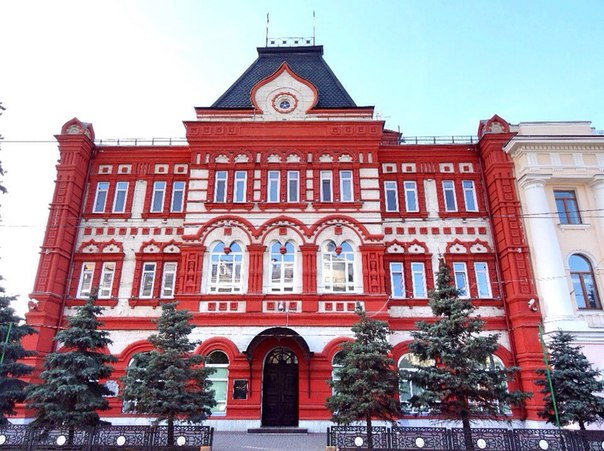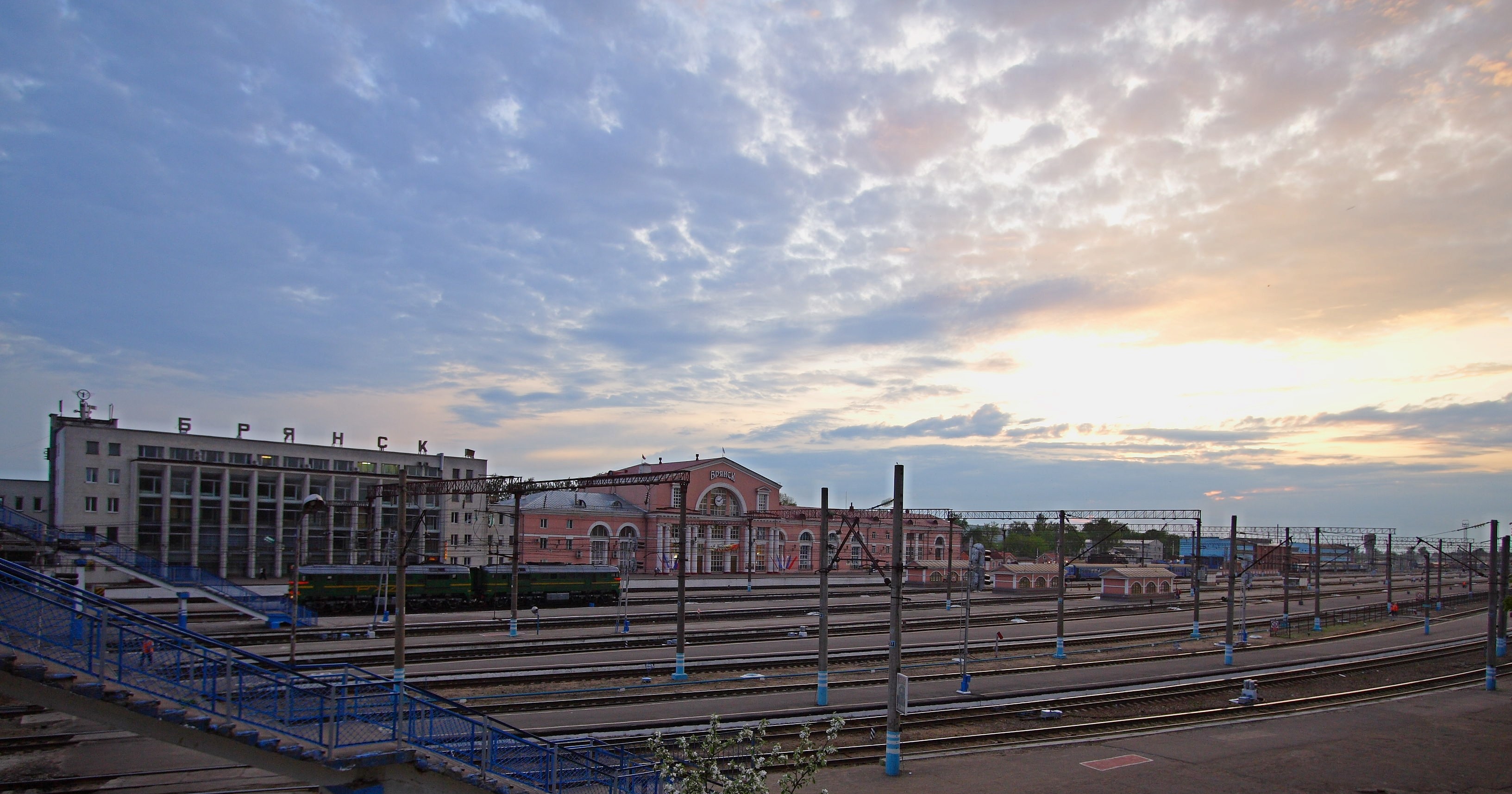|
Great Abatis Border
Zasechnaya cherta (russian: Большая засечная черта, loosely translated as Great Abatis Line or Great Abatis Border) was a chain of fortification lines, created by Grand Duchy of Moscow and later the Tsardom of Russia to protect it from the Crimean-Nogai Raids that ravaged the southern provinces of the country via the Muravsky Trail during the Russo-Crimean Wars. It was south of the original line along the Oka River. It also served as a border between the Muscovite State and the steppe nomads. As a fortification line stretching for hundreds of kilometers, the Great Abatis Border is analogous to the Great Wall of China and the Roman limes. Abatis is a military term for a field fortification made by cutting down trees. The line was built from the felled trees that were arranged as a barricade. It was also fortified by ditches and earth mounds, palisades, watch towers and natural features like lakes and swamps. The width of the abatis mounts up to several hundred ... [...More Info...] [...Related Items...] OR: [Wikipedia] [Google] [Baidu] |
Zaraysk
Zaraysk (russian: Зара́йск) is a town and the administrative center of Zaraysky District in Moscow Oblast, Russia, located about southeast from Moscow. Population: Geography The town stands on the right bank of the Osyotr River, which is a right confluent of the Oka. History In the Middle Ages, the town belonged to the Princes of Ryazan and was known as Krasnoye (13th century) and Novogorodok-upon-the-Osyotr (14th and 15th centuries). From 1528 onwards, the town was called "the town of Nikola Zarazsky" and only by the beginning of 17th century it received its present name of Zaraysk. Before the 20th century, the town was a part of Ryazan Governorate and its architecture and vernacular dialect seem closer to Ryazan than to Moscow. In the Grand Duchy of Moscow, Zaraysk was one of the fortresses forming a part of the Great Abatis Border, a fortified line of felled trees, barricades, fortresses, ditches, which were built by Russians as a protection against the hordes of th ... [...More Info...] [...Related Items...] OR: [Wikipedia] [Google] [Baidu] |
Putivl
Putyvl′Frank SysynBetween Poland and the Ukraine: The Dilemma of Adam Kysil, 1600-1653 - P. 25. (, ) or Putivl′ ( rus, Пути́вль, p=pʊˈtʲivlʲ) is a city in north-east Ukraine, in Sumy Oblast. The city served as the administrative center of Putyvl Raion until the administrative reform in 2018, it is now under the jurisdiction of Konotop Raion. Population: History One of the original Siverian towns, Putyvl was first mentioned as early as 1146 as an important fortress contested between Chernihiv and Novhorod-Siverskyi principalities of Kievan Rus. The song of Yaroslavna on the walls of Putyvl is the emotional culmination of the medieval ''Lay of Igor's Campaign'' and Alexander Borodin's opera ''Prince Igor''. After the Battle of Vedrosha in 1500, Putyvl was ceded to Muscovite Russia. During the Time of Troubles, the town became the center of Ivan Bolotnikov's uprising and briefly a base for the False Dmitry I forces. It was occupied by Polish–Lithuanian Commonwe ... [...More Info...] [...Related Items...] OR: [Wikipedia] [Google] [Baidu] |
Novgorod Seversky
Novhorod-Siverskyi ( uk, Новгород-Сіверський ) is a historic city in Chernihiv Oblast (province) of Ukraine. It is the administrative center of Novhorod-Siverskyi Raion, although until 18 July 2020 it was incorporated as a city of oblast significance and did not belong to the raion. Novhorod-Siverskyi is situated on the bank of the Desna River, 330 km from the capital, Kyiv. It hosts the administration of Novhorod-Siverskyi urban hromada, one of the hromadas of Ukraine. As of 2021, its population is 12,647. History The town was first chronicled in 1044. From 1098 it was the capital of the Siverian Principality, which served as a buffer zone against incursions of the Cumans (Polovtsy) and other steppe peoples. One of the numerous campaigns of local princes against the Cumans produced the great monument of early East Slavic literature, the Tale of Igor's Campaign. After the town's destruction by Mongols in 1239, it passed to the princes of Bryansk and then t ... [...More Info...] [...Related Items...] OR: [Wikipedia] [Google] [Baidu] |
Oryol
Oryol ( rus, Орёл, p=ɐˈrʲɵl, lit. ''eagle''), also transliterated as Orel or Oriol, is a city and the administrative center of Oryol Oblast situated on the Oka River, approximately south-southwest of Moscow. It is part of the Central Federal District, as well as the Central Economic Region. History Kievan Rus While there are no historical records, archaeological evidence shows that a fortress settlement existed between the Oka River and Orlik Rivers as early as the 12th century, when the land was a part of the Principality of Chernigov. The name of the fortress is unknown; it may not have been called Oryol at the time. In the 13th century, the fortress became a part of the Zvenigorod district of the Karachev Principality. In the early 15th century, the territory was conquered by the Grand Duchy of Lithuania. The city was soon abandoned by its population after being sacked either by Lithuanians or the Golden Horde. The territory became a part of the Tsardom of Rus ... [...More Info...] [...Related Items...] OR: [Wikipedia] [Google] [Baidu] |
Alatyr, Nizhny Novgorod Oblast
Alatyr (russian: Алатырь) is a rural locality (a village) under the administrative jurisdiction of the town of oblast significance of Pervomaysk of Nizhny Novgorod Oblast, Russia Russia (, , ), or the Russian Federation, is a List of transcontinental countries, transcontinental country spanning Eastern Europe and North Asia, Northern Asia. It is the List of countries and dependencies by area, largest country in the .... References Rural localities in Nizhny Novgorod Oblast {{NizhnyNovgorodOblast-geo-stub ... [...More Info...] [...Related Items...] OR: [Wikipedia] [Google] [Baidu] |
Ivan The Terrible
Ivan IV Vasilyevich (russian: Ива́н Васи́льевич; 25 August 1530 – ), commonly known in English as Ivan the Terrible, was the grand prince of Moscow from 1533 to 1547 and the first Tsar of all Russia from 1547 to 1584. Ivan was the son of Vasili III, the Rurikid ruler of the Grand Duchy of Moscow. He was appointed grand prince after his father's death, when he was three years old. A group of reformers known as the "Chosen Council" united around the young Ivan, declaring him tsar (emperor) of all Rus' in 1547 at the age of 16 and establishing the Tsardom of Russia with Moscow as the predominant state. Ivan's reign was characterised by Russia's transformation from a medieval state to an empire under the tsar but at an immense cost to its people and its broader, long-term economy. During his youth, he conquered the khanates of Kazan and Astrakhan. After he had consolidated his power, Ivan rid himself of the advisers from the "Chosen Council" and triggered the ... [...More Info...] [...Related Items...] OR: [Wikipedia] [Google] [Baidu] |
Kozelsk
Kozelsk (russian: Козе́льск) is a town and the administrative center of Kozelsky District in Kaluga Oblast, Russia, located on the Zhizdra River (Oka's tributary), southwest of Kaluga, the administrative center of the oblast. Population: History It was first mentioned in an 1146 chronicle as a part of Principality of Chernigov. Kozelsk became famous in the spring of 1238, when its twelve-year-old prince Vasily, son of Titus, had to defend the town against the army of Batu Khan. The latter dubbed it an "evil town" because its citizens had been fighting the attackers for seven weeks in a row, killing around four thousand enemy soldiers during the siege. The citizens of Kozelsk were greatly outnumbered and almost all of them died in battle. In 1446, Kozelsk was temporarily under the rule of the Grand Duchy of Lithuania. In 1494, the town was finally annexed by the Grand Duchy of Moscow. In 1607, one of Ivan Bolotnikov's units was located in Kozelsk and showed resistance ... [...More Info...] [...Related Items...] OR: [Wikipedia] [Google] [Baidu] |
Nizhniy Novgorod
Nizhny Novgorod ( ; rus, links=no, Нижний Новгород, a=Ru-Nizhny Novgorod.ogg, p=ˈnʲiʐnʲɪj ˈnovɡərət ), colloquially shortened to Nizhny, from the 13th to the 17th century Novgorod of the Lower Land, formerly known as Gorky (, ; 1932–1990), is the administrative centre of Nizhny Novgorod Oblast and the Volga Federal District. The city is located at the confluence of the Oka and the Volga rivers in Central Russia, with a population of over 1.2 million residents, up to roughly 1.7 million residents in the urban agglomeration. Nizhny Novgorod is the sixth-largest city in Russia, the second-most populous city on the Volga, as well as the Volga Federal District. It is an important economic, transportation, scientific, educational and cultural center in Russia and the vast Volga-Vyatka economic region, and is the main center of river tourism in Russia. In the historic part of the city there are many universities, theaters, museums and churches. The city was f ... [...More Info...] [...Related Items...] OR: [Wikipedia] [Google] [Baidu] |
Meschera
The Volga Finns (sometimes referred to as Eastern Finns) are a historical group of indigenous peoples of Russia living in the vicinity of the Volga, who speak Uralic languages. Their modern representatives are the Mari people, the Erzya and the Moksha Mordvins, as well as speakers of the extinct Merya, Muromian and Meshchera languages. The Permians are sometimes also grouped as Volga Finns. The modern representatives of Volga Finns live in the basins of the Sura and Moksha rivers, as well as (in smaller numbers) in the interfluve between the Volga and the Belaya rivers. The Mari language has two dialects, the Meadow Mari and the Hill Mari. Traditionally the Mari and the Mordvinic languages ( Erzya and Moksha) were considered to form a ''Volga-Finnic'' or ''Volgaic'' group within the Uralic language family, accepted by linguists like Robert Austerlitz (1968), Aurélien Sauvageot & Karl Heinrich Menges (1973) and Harald Haarmann (1974), but rejected by others like Björn Collin ... [...More Info...] [...Related Items...] OR: [Wikipedia] [Google] [Baidu] |
Bryansk
Bryansk ( rus, Брянск, p=brʲansk) is a city and the administrative center of Bryansk Oblast, Russia, situated on the River Desna, southwest of Moscow. Population: Geography Urban layout The location of the settlement was originally associated with navigable river-routes and was located in the area of the Chashin Kurgan, where the fortress walls were erected. For reasons that have not yet been clarified, the city changed its location and by the middle of the 12th century had established itself on the steep slopes of the right bank of the Desna on Pokrovskaya Hill (russian: Покровская гора). The foundations of the future urban development of the city were laid even earlier, when around the city-fortress in the 17th century after the Time of Troubles of 1598-1613 on the coastal strip at the foot of the Bryansk fortress the posadskaya "Zatinnaya Sloboda" was upset, and on the upper plateau, between Verkhniy Sudok and White Kolodez - the "Streletskaya Sloboda". ... [...More Info...] [...Related Items...] OR: [Wikipedia] [Google] [Baidu] |
Ostrog (fortress)
Ostrog ( rus, острог, p=ɐˈstrok) is a Russian term for a small fort, typically wooden and often non-permanently staffed. Ostrogs were encircled by 4–6 metres high palisade walls made from sharpened trunks. The name derives from the Russian word строгать (strogat'), "to shave the wood". Ostrogs were smaller and exclusively military forts, compared to larger kremlins that were the cores of Russian cities. Ostrogs were often built in remote areas or within the fortification lines, such as the Great Abatis Line. History From the 17th century, after the start of the Russian conquest of Siberia, the word ''ostrog'' was used to designate the forts founded in Siberia by Russian explorers. Many of these forts later transformed into large Siberian cities. When later Siberia became a favourite destination for criminals sent there to serve katorga, Siberian ostrogs became associated with imprisonment, and in the 18th and 19th centuries the word ''ostrog'' often meant ''pri ... [...More Info...] [...Related Items...] OR: [Wikipedia] [Google] [Baidu] |






